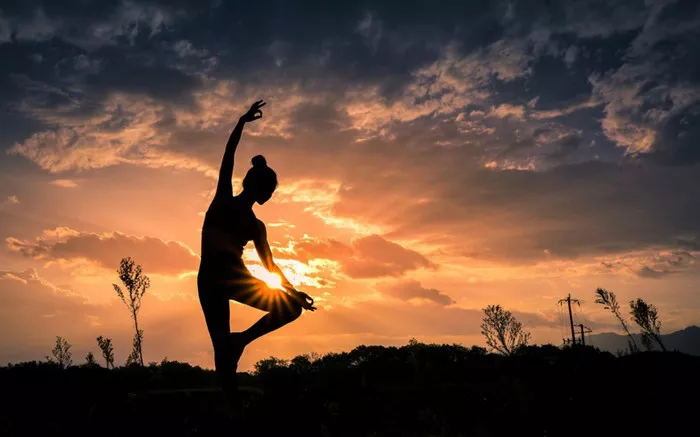Ashtanga yoga is one of the most recognized and revered styles of yoga in the world. Known for its rigorous, structured sequence of postures, synchronizing breath with movement, and a strong emphasis on discipline, Ashtanga yoga has made its way into the hearts of yoga practitioners globally. The system was popularized by Sri K. Pattabhi Jois in the 20th century and has since influenced the broader yoga community, giving rise to styles such as vinyasa yoga.
Despite its widespread acclaim and benefits, Ashtanga yoga is not without its contradictions and complexities. These contradictions can often leave new practitioners perplexed and sometimes frustrated, while more seasoned practitioners may encounter internal conflict as they delve deeper into their practice.
In this article, we will explore the contradictions inherent in Ashtanga yoga. We will examine the philosophical, physical, and mental tensions that practitioners may encounter and how these paradoxes can enrich or challenge the practice. By better understanding these contradictions, one can navigate Ashtanga yoga with greater awareness, balance, and compassion.
The Rigidity of the Practice vs. the Flexibility it Cultivates
One of the most fundamental features of Ashtanga yoga is its rigid structure. The practice consists of six series, each progressively more advanced than the last. The postures within each series must be practiced in a specific order, and each movement is synchronized with a specific breath pattern. This fixed sequence of asanas (postures) may appear to be a system of strict rules that leaves little room for variation.
The contradiction here lies in the fact that this rigid practice, which seems to emphasize control, is the very thing that cultivates flexibility—both physically and mentally. Over time, the repetition of specific asanas in a consistent sequence allows practitioners to open up their bodies, releasing tension and stiffness. The mind, too, becomes more flexible as practitioners learn to work with the discipline of the sequence while letting go of expectations and judgments.
However, the tension between the structure and the freedom that arises from consistent practice can lead to inner conflicts. Beginners may feel restricted by the system, while advanced practitioners may question whether they are truly exploring the breadth of yoga or simply adhering to a tradition.
The Discipline of Daily Practice vs. the Importance of Rest and Recovery
Ashtanga yoga places a strong emphasis on consistency and discipline, with many practitioners following a daily practice routine. This commitment is often seen as one of the keys to achieving progress in yoga. The regular practice is meant to purify the body and mind, build strength, and deepen the practitioner’s connection to their breath and their inner self.
The contradiction arises when we consider the importance of rest and recovery. Ashtanga yoga is physically demanding, especially as practitioners move into the more advanced series. The body’s muscles, joints, and connective tissues require rest to repair and rejuvenate. Overtraining, especially in the context of a daily practice, can lead to injury, burnout, or depletion of energy.
The philosophical aspect of yoga teaches that balance is essential. While discipline and consistency are key to progression, overworking oneself is not aligned with the holistic nature of yoga, which also prioritizes self-care, rest, and listening to one’s body. The paradox here is that true growth in Ashtanga yoga is not only about pushing through daily practice but also recognizing when to rest, honor limitations, and allow the body to recover.
The Focus on Individual Progress vs. the Collective Spirit of Community
Ashtanga yoga is often practiced individually, with practitioners following their own pace through the sequence. The tradition emphasizes personal growth and self-discipline, encouraging practitioners to observe their own progress without comparing themselves to others. This individual focus fosters a sense of internal introspection and self-awareness.
However, many practitioners find that the spirit of Ashtanga yoga is deeply connected to a sense of community. The practice of yoga, especially in its traditional form, is often done in a group setting. In Mysore-style classes, for example, students practice at their own pace while the teacher offers individual guidance. This fosters a collective energy that supports the individual’s journey.
The contradiction here arises when we consider the tension between individual progress and the collective spirit of community. While yoga is inherently a personal journey, it is difficult to ignore the role of the community in the process. Many practitioners draw strength from the shared energy and support of others, while others struggle with comparing their progress to those around them. The yoga community is meant to be a place of support and inspiration, but this very connection can sometimes lead to feelings of inadequacy or competition.
The Emphasis on Perfection vs. the Acceptance of Imperfection
Ashtanga yoga is often associated with precision, alignment, and mastery of postures. The system is structured around specific techniques, precise breathing patterns, and exacting movements. The emphasis on mastering postures and advancing through the series can create an environment where practitioners strive for perfection.
Yet, yoga philosophy teaches the opposite: it calls for acceptance of imperfection and a focus on the present moment. In fact, one of the central tenets of yoga is the acceptance of one’s limitations. The idea is not to strive for perfection in the poses but to use the practice as a mirror for understanding one’s body, mind, and heart.
The contradiction here lies in the tension between the desire for perfection in the physical postures and the deep acceptance of imperfection. As practitioners advance through the series, they may feel the pressure to master every posture. However, true yoga is not about achieving perfect postures but about cultivating awareness, humility, and acceptance, both on and off the mat.
The Physical Practice vs. the Spiritual Aim
Ashtanga yoga is often seen as a physically demanding practice, one that emphasizes strength, flexibility, and endurance. The postures are designed to stretch and strengthen the body, and the breathwork helps to purify the mind. The physical benefits of Ashtanga yoga are often the primary motivation for practitioners when they first begin the practice.
However, the true aim of Ashtanga yoga is spiritual growth. The practice is not solely about developing a strong, flexible body but about purifying the mind and spirit. The physical postures are a means to an end, not the end itself. The ultimate goal of yoga is self-realization, connecting with the deeper aspects of one’s being, and achieving inner peace.
The contradiction here is that many practitioners become so focused on the physical practice—on mastering postures or advancing to the next series—that they forget about the spiritual aim of the practice. As a result, Ashtanga yoga can sometimes become a form of physical exercise or a pursuit of physical perfection, rather than a holistic practice that includes mental, emotional, and spiritual transformation.
The Teacher-Student Relationship vs. the Personal Journey
In traditional Ashtanga yoga, the teacher-student relationship plays a pivotal role. The teacher provides guidance, hands-on adjustments, and advice to help students advance in their practice. The teacher is seen as a mentor who imparts wisdom and helps students navigate the challenges they encounter along the way.
However, yoga is ultimately a personal journey. The teacher can guide and inspire, but the practitioner is the one who must walk the path and engage with their own body, mind, and spirit. The contradiction arises when students place too much emphasis on the authority of the teacher, viewing the teacher as the ultimate source of knowledge or validation. At the same time, yoga encourages independence and self-reliance, teaching that true wisdom comes from within.
In some cases, students may become overly reliant on their teacher or struggle with the notion of “guru worship.” The balance between respecting the teacher’s role and embracing one’s own autonomy in the practice is a delicate one. Yoga is about finding one’s own truth, and while teachers provide valuable insights, the personal journey must remain the student’s own.
The Need for Effort vs. Surrender to the Flow
Ashtanga yoga requires significant effort, determination, and discipline. The practice is physically demanding, and practitioners are encouraged to push their limits, strive for greater flexibility, and work on refining their alignment. This emphasis on effort is essential to building strength and discipline in the practice.
However, yoga also teaches the importance of surrendering to the flow of life. In many spiritual traditions, including yoga, the concept of surrender is central to achieving peace and tranquility. This surrender is not about giving up effort but about letting go of attachment to specific outcomes and allowing the practice to unfold naturally.
The contradiction here is that while Ashtanga yoga requires focused effort and persistence, there must also be an element of surrender. Surrendering to the practice means letting go of attachment to perfection, releasing the need for control, and accepting whatever arises in the moment. True mastery in Ashtanga yoga comes not from forceful effort alone but from the ability to balance effort with surrender, creating harmony between the two.
Conclusion
Ashtanga yoga, like all forms of yoga, is a practice that contains within it various contradictions. The tension between discipline and flexibility, effort and surrender, individual progress and collective community, and physical practice versus spiritual aim are inherent to the system. These contradictions are not obstacles to be overcome but opportunities for deeper understanding and growth.
As practitioners of Ashtanga yoga, it is essential to embrace the paradoxes within the practice. Rather than seeing these contradictions as problems, we can view them as invitations to explore the complexity of yoga and to find balance in our practice. By doing so, we can enrich not only our physical practice but also our mental, emotional, and spiritual well-being, aligning ourselves with the true essence of yoga.
Related Topics














